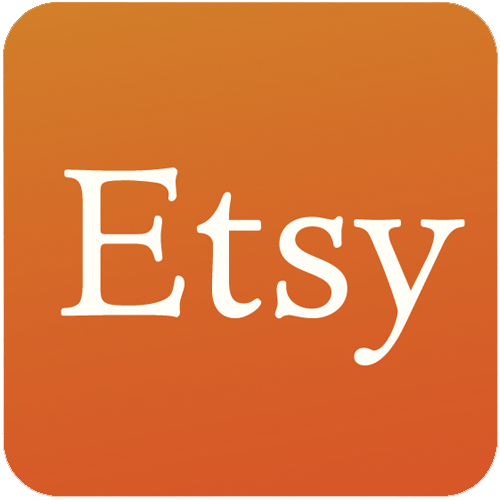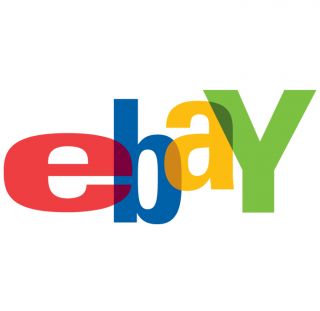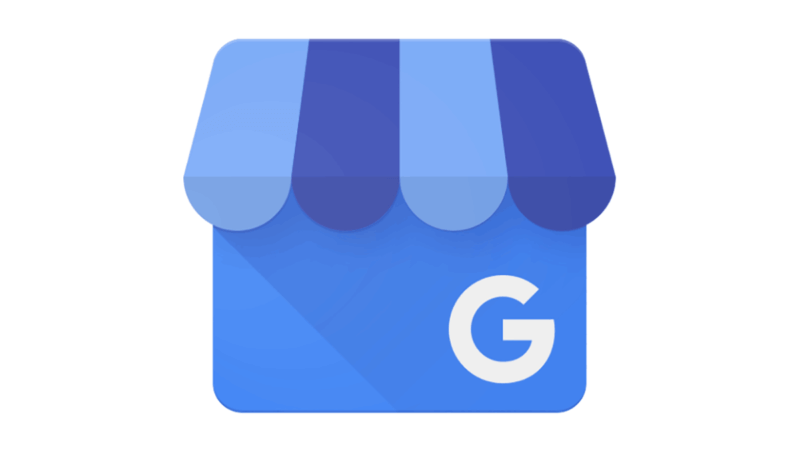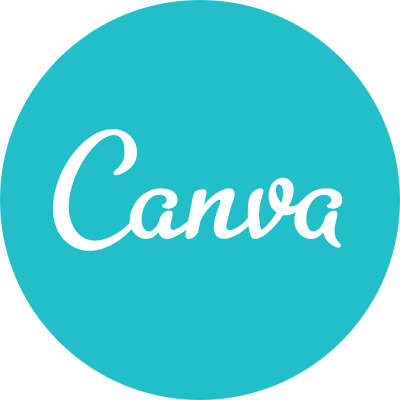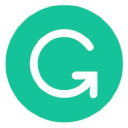How I Started A $8K/Month Pool Service And Installation Business
Hello! Who are you and what business did you start?
I’m Dan Stewart and I’m the founder of Dundas Valley Pools. We help homeowners with swimming pools in Southern Ontario, Canada maximize the summers in their backyard. We do this by providing personalized, on-site services such as pool openings/ closings, pool maintenance, equipment installations, pool renovations, and new pool installations. Since our humble beginnings in May of 2016 we have serviced 350+ pools, opened and closed 200+ pools, and have installed tons of high-quality pool equipment, pool liners, and winter safety covers for happy customers throughout Southern Ontario.
Although Dundas Valley Pools began as a company focusing solely on pool openings and closings, we have confidently moved into more and more technical services such as leak detection and repair, liner repair and installation, winter safety cover installations, and pool/backyard renovations. We plan to begin our first in-ground pool installs this year in 2020. We are also in the process of discussing a partnership opportunity with another local pool business which is pretty darn exciting.
Dundas Valley Pools has grown from a company producing very little revenue in 2016 to a company that is earning an average of $8000/ month net revenue during the on-season. This year we hope to actually double that number. This is due to our expansion into more technical services as well as taking on larger jobs-- namely, new pool installations.

What's your backstory and how did you come up with the idea?
Even in high school I was very interested in the idea of starting my own business and someday being my own boss. My dad was the Vice President and co-owner of a construction company while I was growing up and so having a role model like him most certainly contributed to my desire to follow in his footsteps (albeit in a different industry). My grandfather originally started a construction business back in the 1970s which is how my dad was introduced to the industry. I am the third generation of business owners in my family.
I never thought I would be working in the pool industry. In 2016, I graduated at the University of Waterloo with an Honors B.A in Recreation and Sport Business. I have always enjoyed sports, recreation, and the outdoors. My thought coming out of high school was to start an outdoor recreation/adventure sports magazine. Although that hasn’t happened, it’s interesting to think about how I am still working in Recreation and Sport. I guess you could say I’m the “behind the scenes” guy-- at Dundas Valley Pools, we make sure homeowners pools are up to speed and that families can enjoy as much leisure time in their backyard as possible with little to no hassles.
While I was in university, my desire to start my own business continued to grow. One thing I have realized now is that I was more romanticized by the idea of starting a business than I was interested in the actual act of doing so. I think this is an important point to make because it is so easy to get obsessed with an idea or aspiration more than the actual act or result. In my opinion, it is one of the worst mistakes a person can make prior to taking action. Perhaps I can speak more towards this point later on in the interview.
So how did I start this business? Well, it all began in my backyard one day. Back in 2015, I was living at home (at my parent’s house) and working a part-time job while completing some university courses. During that spring, our family’s pool company came to service the pool and perform the opening procedures. I had a brief conversation with the owner, and out of that conversation, I got a part-time job working with pools. I began just as a helper. I had no idea what I was doing. I mostly just helped lift things and put them back down. It was kind of like going to the gym but also getting paid and learning some stuff about how a swimming pool works.
The pool industry is pretty interesting. Or at least to me it is. The thing is, being a pool technician isn’t technically considered a trade. There isn’t a trade-school you go to in order to become a pool guy. With that being said, there are tons of trades that overlap into the pool industry. You need to know some plumbing and electrical at a bare minimum, and it helps to know some masonry, construction, and concrete forming. Because of this, there are only so many pool technicians out there-- and a large number of them don’t really know what they’re doing.
I can’t emphasize enough the importance of talking to customers.
I worked at that first pool company for about a year and a half. I learned a lot about the good, the bad, and the ugly of the industry from that first job. It allowed me to understand the things that would lead to a good business, and the things that would lead to a bad one. I eventually knew I had to move on to another company, and started applying for work. I applied for a number of companies in the area and what do you know? I got an email back from almost every one of them! Never in my life had I thought about getting a job this easily. I started at the new company with a higher wage and longer hours. We closed about 200 pools that year and also got a little bit of experience with some technical work (winter safety cover installs as well as one new pool installation).
I saved up my money from that season in preparation for a BIG decision: I was going to move to Australia and work in the pool industry. I had done some research on the pool industry and came to the decision that this would be a great opportunity for me to:
A) Take advantage of a working holiday visa that Australia offered to Canadians under 30
B) Earn an even higher wage than I was making in Canada (Australia’s minimum wage was something like $22.50 at the time)
C) Continue working in the pool industry (in Australia) without having to work a winter job in Canada, and
D) Build up my knowledge base on the technologies behind the industry.
Australia is renowned for its pools. For one, Australia more or less started the “salt-water pool” industry, they had several world-renowned companies that came out of their country, and since they have a much warmer climate than Canada, their pools are open year-round! It sounded good to me. There was also a girl I had met several years prior to this decision that certainly added to my motivations.. Most good stories usually involve a girl ;)
I landed in Australia on December 8th 2018 and got a job by December 21st. I was living in Melbourne, Australia: home to over 225,000 pools and several prominent service companies. I learned SO SO much in Australia. Installation, maintenance, troubleshooting, salt-water-generators, automation, plumbing, how to talk to customers, and much more. I was such an asset to the company I worked for that they even offered to sponsor me to live in Australia permanently. Never in my life did I have a skill that was so valuable. Now it was time to leverage it.
I got back to Canada in March 2019 and worked for a local pool company for as long as I could. What I mean is that I knew I wouldn’t be working for someone else forever-- I just knew I needed cash flow and that my customer base wasn’t big enough to justify going full-time with my own company. If I could work full-time for someone else’s business while building up my own business during my off-time, it would be less risky for me. It was a good call, but by the middle of May 2019, I was getting so much business on the side that I wasn’t able to keep up with it while also working a full-time job at someone else’s pool company. Now I knew it was time to go full-time on my own.
Going full-time was the best decision of my life. There was so much uncertainty to making this decision, but the risk was totally worth it. Since May, I’ve built up a customer base of about 80 loyal customers that bring in an average of $1200 net revenue per customer per year.

Take us through the process of designing, prototyping, and manufacturing your first product.
We started the business as lean as possible. We got our website made for $300 through a random conversation I had with a tow-truck driver. The original door-to-door flyer that we used was done 100% on Vistaprint. I didn’t even outsource someone to make the design— I just did it myself using their in-page design tool. It may have looked “basic” but it got the job done. Regardless of how bad I was at design, the postcard (and the conversation I would have with prospective customers) got the message across: we’re a small and caring business that takes pool openings seriously and are looking for great customers in the area. Like I said, it got us our first 20 customers.
When we first secured those customers, we didn’t even have pool equipment. What’s the point in buying a bunch of pool equipment if we aren’t even making money yet? For the Spring opening months (and the subsequent Fall closing months), a friend of a friend lent us a 2” submersible pump with hoses. We used this to lower the pool water in order to do the necessary procedures for openings / closings. The most efficient way of getting this part of the job done would have been to purchase a gas trash water pump , but we couldn’t afford one so we used a submersible. It took 2-3x more time to use an electric submersible pump than using a 3” gas trash pump, but we worked with what we had and nonetheless got the job done (Do things that don’t scale!).
As time has progressed, we have grown to have a significantly larger customer base, and a significantly different one as well. As we have grown, we’ve focused more on the ideal customer: a pool owner with a good attitude towards the work that they hire, that makes well-informed decisions on purchases, and has the money to afford the upkeep (and upgrading) of their pool & backyard. Though your ideal customer may change over the course of time you are in business, it is important to work towards always communicating and producing value for a customer that needs it. Whether you compete on price, product, or service quality, the customer has to want what you’re offering.


We used a freelancer on Fiverr to draft up some logos for the company. We never used any of these logos, instead of sticking with the current DVP logo (in black).


Current logo:

Summer 2018 Postcard design:


2019 Company Shirts - Definitely added more professionalism to every customer interaction!


Describe the process of launching the business.
We launched the business as lean as possible. When we started out, it was my friend and me that were both working at a pool company and had decided to do some pool work on the side. How could we leverage our skills to make a little more money? After asking around, we found a friend with a submersible trash pump that we could use for pool services. Our initial tools literally cost us nothing. We both lived with our parents. Our overhead was literally nothing. The good thing about this is our burn rate was NOTHING. We weren’t running out of money… But we still hadn’t solved the problem of GETTING money.
There’s a great essay by Paul Graham-- the founder of Y Combinator-- titled Do Things That Don’t Scale. I highly recommend that you read it. P.G is pretty much the Socrates of Startups.
Here’s the thing about starting a startup: you want to do all the things to make the business scale. There is often a strong desire to scale and grow fast. The thing is, you can’t necessarily do the things to grow an established business and expect it to work on a business that is just starting out. One of the biggest challenges with starting a new business is getting Product-Market Fit. In order to do this, you often have to engage in non-scalable activities such as focus groups, talking to customers manually (especially ones that are willing to pay for something!), and many other activities that simply don’t scale.
What we first did was look at Google Satellites to determine pools in our area. We took a list of all the pools we could find and collect their addresses. After that, we went door-to-door and spoke with homeowners, telling them that we had started a new pool business and were happy to help them with anything they needed to be done on the pool. This proved to be one of the most valuable activities we could have done. It resulted in our initial 20 customers for pool openings/ closings as well as 3 safety cover installations-- a total of $7000 in net revenue!
After acquiring those initial customers in the spring, we found a web designer that made us a one-page website for $300. It wasn’t the fanciest website but it got the job done. Don’t be afraid of having your first website not be perfect. If it is perfect, you launched too late. Launch with a Minimum Viable Product that can test a hypothesis. Then reiterate and pivot if necessary. No sense starting with some amazing website and not having it get you what you want!
Since launch, what has worked to attract and retain customers?
Since going full-time in May 2019, a number of things have worked to attract and retain customers. I’ll speak about retaining customers first and then about attracting new ones.
Retaining customers has been a product of the following: friendliness and honesty, flexible scheduling, and fair prices. You would be surprised how much of an impact you can have on someone just by being a nice person. It’s so easily overlooked. In regards to flexible scheduling, we separate ourselves from the competition by allowing customers a more flexible schedule. They often want to be there when they’re getting service on their pools, and bigger companies can’t always guarantee that. We make sure to call customers when we are on our way. It's something extra that we can provide that is so easy for us to do and yet adds a lot of value for our customers. They really enjoy getting that phone call.
Fair prices are simply a matter of having prices that are honest and fair, that still leads to good margins for us while being comparatively lower than the bigger companies. Pools are expensive. Most things these days are. If you can communicate higher value and still be at the same price as the competition, or less, it will work wonders.
In regards to attracting new customers, over the past year, we have put a considerable amount of money into advertising-- namely, Google Ads and Facebook Ads. We spent roughly $6,000 on ads between September and mid-November last year. It resulted in approx. $24,000 in additional net revenue. It’s something we had the budget for but are still cautious about our ad spend.
You know you have a really good business with great product-market fit when you barely have to spend anything on advertising and you’re still getting new customers. This upcoming season, we’ll still be implementing a digital advertising strategy, but we will also be doing some door-to-door advertising/sales. It works incredibly well, and it enables you to actually choose your customers. The last thing you want in life is to be involved with bad people. You can usually red flag these people within 5 minutes. Some people’s money simply isn’t worth the same as others, and it’s just as important to filter out bad customers as it is to attract good ones.
What does your advertising strategy look like? Can you talk more about what worked and what didn’t?
Sure, can! We made a lot of mistakes last year. It’s important to make mistakes. It means you’re taking risks. It means you’re learning and growing. You’d better believe Michael Jordan missed a lot of shots before becoming one of the greatest basketball players of all time.
In the Fall of 2019, our advertising strategy consisted of a Google Ads campaign as well as a Facebook Ads campaign. In the spring, we did it ourselves. For the Fall, we outsourced this work to a company that specialized in this. We found them on Upwork.
The Google Ads campaign consisted of keyword development and optimization of the campaign to lower CPC. What ended up happening is we got a lengthy keyword campaign all divided nicely into different subgroups, but we got a lot of clicks that weren’t relevant to our core offerings. We’re really just looking to do pool closings and winter cover installations in the Fall, so trying to cover all the bases in retrospect just didn’t make sense. It was foolish and it led to a lot of money being spent on clicks that didn’t lead to sales or contact form completions on our website.
Another thing we noticed is a lot of people weren’t converting on our page. We had hired a company to redesign our website in the summer and it looked great, but we found that people were still getting lost on our page. The last thing you want is to be paying Google tons of money for clicks and not having those clicks lead to a form of submission or a phone call. This season we’re in the process of hiring a local guy to make about 10-12 landing pages that are super easy to read and follow, and that are each built specifically for a given keyword that we target on Google. For liner installations, we will have a page for each suburb. The same goes for equipment installs and pool openings/closings. We think that this will lead to higher conversions due to customers not getting lost on our page, as well as a lower CPC due to the pages being relevant to the keywords.
Getting on the phone with Google and having them explain some of the intricacies of Google Ads has really helped with this decision-making process. I can’t tell you how important it is to ask for help. If you think you can do this all on your own you’re going to have a lot more trouble than if you put your ego aside and actively seek help in getting you where you want to go. If you don’t ask, the answer is always no. We spoke with Google on the phone, and (according to the conversation we had) they will walk you through each and every step of designing the ad strategy you want as long as you’ve got at least one ad that is running for $70/day. It doesn’t have to result in $70/day ad spend, it just needs to be running for max. $70/day.
How do you retain your existing customers?
When we started out, we didn’t put a great deal of effort into retaining customers. They’ll call us when they need us, right? This proved to be a big mistake because we lost customers due to neglect. Let me help you not make the same mistake we did. Talk to customers. Don’t be afraid to talk to customers.
Think of customers as people. That’s who they are. They’re people. People with lives of their own, thoughts and concerns of their own, values of their own, and a time schedule of their own. If you neglected your friends, do you think they would still be messaging you on Facebook each day? Probably a lot less likely.
It can make a huge difference to have an email drip campaign. I think that email drips are a necessity for any business that collects customers’ contact info. It’s one of the first ways a business can funnel customers through the business. It allows you to automate communications in such a way that a potential customer can go from knowing nothing about the business to understanding what you do, why you do it, why you do it better than the competition, etc.
One thing’s for sure: email isn’t dead. People still check their emails. If you can acquire email addresses, you’d better be crafting a strategy around funneling those contacts into a position in which the readers can make more well-informed decisions at their own pace. People want to make decisions. People want to buy things. They just need to be able to justify their decision. It’s your job to help them do that-- and if you aren’t, you’re doing a disservice not only to yourself but to your customers as well.
Last year we paid for a monthly CRM subscription to organize and automate our emails. In retrospect, we shouldn’t have paid for this. We’re not quite at a level in which we need software such as this (especially if we’re paying $24/ month!). When you’re starting out, it’s easy enough to keep contacts in a free excel or Google Sheets document and do things manually. How hard is it to copy and paste email addresses? Answer: Pretty easy.
There are definitely benefits to having a CRM. You have to weigh the benefits with the costs, but if you can use free services, USE THEM! Anything you can do to add value to your company while keeping your costs low is going to give you better cash flow, lower your burn rate, and it’s going to keep you in a habit of creating value with little or no waste. It’s going to force you to do things that matter, instead of trying to throw money at problems and expecting them to be solved.
How are you doing today and what does the future look like?
Right now we’re preparing for the upcoming season. Last year was our most successful year but it was full of mistakes along the way. We’re trying to correct each of those mistakes and streamline the business towards even greater success in the upcoming 2020 season.
Just looking at our last quarter (Sep-Nov 2019), we spent $6,000 on ads to make $24,000. This meant that 25% of our net revenue went to covering our ads. We can’t be allocating 25% of net revenue to ads. It just doesn’t make sense. It means that money had been wasted, and as I said before, you never want to be wasting a dollar.
Here’s a breakdown of our customer acquisition costs:
- Facebook Ads Funnel - $30/customer
- Google Ads - $60/ customer
- Door-to-door - Basically only the cost of gas and time!
You can see how “Doing Things That Don’t Scale” can really pay off in the beginning, right? We wouldn’t have been able to afford to pay for customers in the beginning!
In terms of our distribution, our marketing and sales distribution is a combination of direct marketing (door-to-door), online ads, web traffic from organic searches, and word-of-mouth. An important thing we have learned about distribution is that not every distribution channel is created equal. You’re going to acquire different customers, and different quality customers, from different distribution channels.
We’ve noticed empirically that the customers we get from paid ads are different customers than from our door-to-door sales or word-of-mouth. Despite costing us less, the door-to-door customers and word-of-mouth customers are 7 times out of 10 better customers than our paid-for customers. They’re familiar with the business and have either been introduced to us in person or through a reliable friend that can vouch for us. These customers are more comfortable with pricing, more comfortable with service, and just overall tend to be better customers to work with. If you’re spending lots of money to acquire poor quality customers, something needs to be done to change this.
Through starting the business, have you learned anything particularly helpful or advantageous?
You can only do so much on your own. When we first started out, it was my friend Brad and I working together opening and closing pools. As time progressed, Brad quickly shifted his career path towards a career as an accountant. It was a bit of a set-back, but I made it work. Looking back, I realize how much of an asset he was to the business. Not just from a labor perspective, but as a person to count on, a person that also cared about the business and was someone to talk to about anything whatsoever that was on my mind. As your business grows, you will go through some tough times. Every business does. But it’s important to have a support net.
I can’t emphasize enough the importance of talking to customers. Customers are people. They’re actually people more than they are customers. If you talk to people like humans and strive to have human connections with people on earth, you’re going to progressively stumble upon more and more pieces of gold that will aggregate inside your mind-- and in doing so, lead to truths and conclusions you wouldn’t find otherwise.
Start lean. Do things that don’t scale. I don’t care how much money you have, you cannot afford to be frivolously burning money. Especially if you don’t have product-market fit. How do you know when you have product-market fit? People are friggin TALKING about you without you even paying them to do so! Repeat customers are increasing WoW/MoM/YoY and every time they buy something from you, they’re even happier than the last time that they did. How do you make it happen? See the paragraph above!
Establish yourself as a figure of authority. People want to justify their decisions. If you can prove a level of knowledge, experience, and overall authority, customers can see that you mean business. It makes things easier when you are perceived by the market as a business that knows what they’re doing. You can achieve this by establishing industry connections/certifications, offering free materials that are relevant to customers, and making a point to capture reviews from customers that can be displayed throughout the points of interaction with your business.
What platform/tools do you use for your business?
We started off using very simple software: namely, Google Sheets. We used this to organize customers, leads, and weekly job activities. We also used it for general accounting purposes. As a startup, you’ve got to start learning. Everyone thinks they could start a business if they only had a million bucks. Well, you don’t have a million bucks. Take advantage of free tools.
We used Fiverr to find someone to design our initial door-to-door advertising materials. This cost us $60-- pretty good if you ask me. There are a lot of options on this platform and it takes some time to find the right fit, but it can prove to be an affordable solution to getting something done without directly hiring someone into the company.
Another freelance platform we use is Upwork. We used this to redesign our website and to design/ manage our Facebook Ads Campaign. For the most part, we were very happy with the quality of talent that we got from this platform. One issue that we had on the website design side of things is that there was a glitch with our contact form. This was really frustrating because we were paying for ads, and at one point people weren’t able to submit their contact info. We actually found this out because a customer called us and let us know that they thought something was wrong with the contact form on our website! What an angel!
Over the past several weeks, we’ve been really upping our Instagram and Facebook games. If you can post some valuable or attention-grabbing material each and every day, you’re going to develop a following. It goes hand-in-hand with product-market fit: if you’re creating something people want, people will like it. We use a nifty (free!) app called InsTake Downloader to download inspiring, attention-grabbing pool industry content. We then re-post content on our page with photo creds to the source. We link our Facebook account with Insta so that uploads on Instagram also upload to Facebook, thereby strengthening our presence on both platforms. Highly recommended!
What have been the most influential books, podcasts, or other resources?
There’s a reason that the average CEO reads something like 52 books a year. There are people that have written books with the information they’ve compiled over their entire lives. That means you can get a lifetime of knowledge from a 200-page book you could pretty much read in a week if you set your mind to it. These books (and many others) have answers to problems you’re facing or will face. If all you get out of this interview is a list of books I recommend (as well as my overall recommendation to read tons of books), I’d be happy.
- Choose Yourself - James Altucher
- The Start-up of You - Reid Hoffman
- Zero to One - Peter Thiel
- Essays by Paul Graham
- IndieHackers website / podcast
- How to Hardscape Podcast (relevant for labor-based businesses and contractors)
- Crossing the Chasm - Geoffrey Moore
- The Innovator's Dilemma - Clayton Christenson
- Blue Ocean Strategy - W. Chan Kim and Renée Mauborgne
Advice for other entrepreneurs who want to get started or are just starting out?
- Start small
- Do things that matter
- Make something people want
- Solve your own problems
- Build a business that solves a problem you’re having
- Network with people and make conscious efforts to connect with people you find interesting, inspiring, knowledgeable
- Ask for help
- Don’t overspend
- Try not to spend anything in the beginning (certainly not until you’ve got product-market fit)
- Find partners
- Keep a good support net
- Take calculated risks
- Talk to customers
- Be a human
- Strive to see customers as people
- Build an Integral Business
Are you looking to hire for certain positions right now?
We’re always open to getting help from inspirable, high-energy people that are striving to do things that matter. Be it PPC marketers, growth hackers, graphic designers, or web developers, we want to work with incredible people. Life’s too short to not love every minute of it. If you are looking to connect and help us reach our goals, I promise you that we will help you reach yours.
Where can we go to learn more?
I would truly appreciate it if any readers would like us on Facebook, follow us on Instagram, and give us a quick review on Google!
Especially with our Google My Business Listing. If anyone could give us a review on Google My Business that would be super helpful for us! Since Google is moving more towards their own business listings, it really helps for us to have reviews that accumulate on Google’s page so that they bump us to the top of the page when locals search for pool companies in our area. I don’t want anyone to be dishonest in their review, just write about how you found out about us and what you think of the company. So greatly appreciated guys!!!
If you have any questions or comments, drop a comment below!

Download the report and join our email newsletter packed with business ideas and money-making opportunities, backed by real-life case studies.

Download the report and join our email newsletter packed with business ideas and money-making opportunities, backed by real-life case studies.

Download the report and join our email newsletter packed with business ideas and money-making opportunities, backed by real-life case studies.

Download the report and join our email newsletter packed with business ideas and money-making opportunities, backed by real-life case studies.

Download the report and join our email newsletter packed with business ideas and money-making opportunities, backed by real-life case studies.

Download the report and join our email newsletter packed with business ideas and money-making opportunities, backed by real-life case studies.

Download the report and join our email newsletter packed with business ideas and money-making opportunities, backed by real-life case studies.

Download the report and join our email newsletter packed with business ideas and money-making opportunities, backed by real-life case studies.

